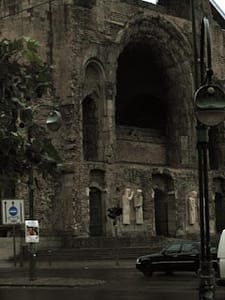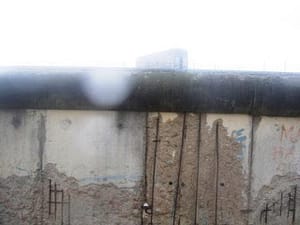Traveling from Stuttgart to Berlin took some time, and by the time we arrived at our hotel—located just outside the city—it was already late on a Saturday night. One of the first things we noticed was the convenience of purchasing train and bus tickets directly from the hotel’s front desk. It cost an extra euro, but the ease of access, along with the maps provided by the clerk, made it well worth it!
A Glimpse into Berlin’s History
While waiting for the bus the next morning, I read up on Berlin’s history and was surprised to learn that the city dates back to the 1300s. Originally two Slavic settlements on opposite sides of the River Spree, Berlin became a thriving trade hub in 1307. By 1486, it had become the royal seat, and from 1642 onward, each ruling prince contributed to its growth. By the late 1700s, the city’s population had doubled, establishing Berlin as a major center for the German textile industry, particularly in silk and cotton manufacturing.
Navigating the City
We boarded Bus #623, which had a helpful closed-captioned screen displaying the date, time, and upcoming stops—especially useful since I couldn’t understand a word the announcer was saying! Our stop was right across from the train station, and with perfect timing, our next train arrived just five minutes later.
Arriving downtown, we set off in search of city tour bus tickets, but deciphering the map was a challenge. The streets were nearly empty due to the rain, and though we had an umbrella, I was wearing just a lightweight sweater. My husband, the wiser of the two, had brought a hoodie. We eventually found an Italian bistro with open doors, but despite my ability to speak Italian, the employee there didn’t. So, we kept walking.
Finally, we found the ticket office for the hop-on, hop-off city tour bus. However, the clerk was new and unsure of where the first stop was. He studied a map and pointed us in the right direction—so off we went.
A Somber Reminder of History
 As we waited for the bus, I took a photo of the Kaiser Wilhelm Memorial Church, built in 1895. Badly bombed during World War II, it has been left in its damaged state as a poignant reminder of the destruction of war. A modern tower was later constructed beside it.
As we waited for the bus, I took a photo of the Kaiser Wilhelm Memorial Church, built in 1895. Badly bombed during World War II, it has been left in its damaged state as a poignant reminder of the destruction of war. A modern tower was later constructed beside it.
Standing there, I couldn’t help but feel a certain eeriness. Maybe it was all the war movies my dad watched when I was growing up, maybe it was the somber weather, or perhaps it was the weight of history surrounding us.
Our tour had 15 stops, but we planned to visit only five—focusing on sites that most interested us. One of the most striking locations was the Berlin Wall, or rather, what little remains of it today. Once stretching over 100 miles with watchtowers every so often, the wall stood at about 13 feet high, separating families and friends for 40 years. Though much of the “dead zone” has been rebuilt, a preserved section remains as a memorial to the more than 70 people who died trying to escape.
 I snapped a photo through the bus window, rain blurring the image—a fitting symbol of the tragic past that still lingers in Berlin’s streets.
I snapped a photo through the bus window, rain blurring the image—a fitting symbol of the tragic past that still lingers in Berlin’s streets.
Have You Explored Berlin?
Berlin is a city where history and modern life intertwine in fascinating ways. Whether you’re drawn to its rich past, vibrant culture, or iconic landmarks, there’s something for everyone. Have you visited Berlin before? What historical site or experience left the biggest impression on you? Share your thoughts in the comments below—I’d love to hear about your adventures!
If you’re planning a trip, stay tuned for Part 2, where I’ll dive into the must-see stops from our city tour. And if you enjoyed this post, don’t forget to subscribe for more travel stories and tips!